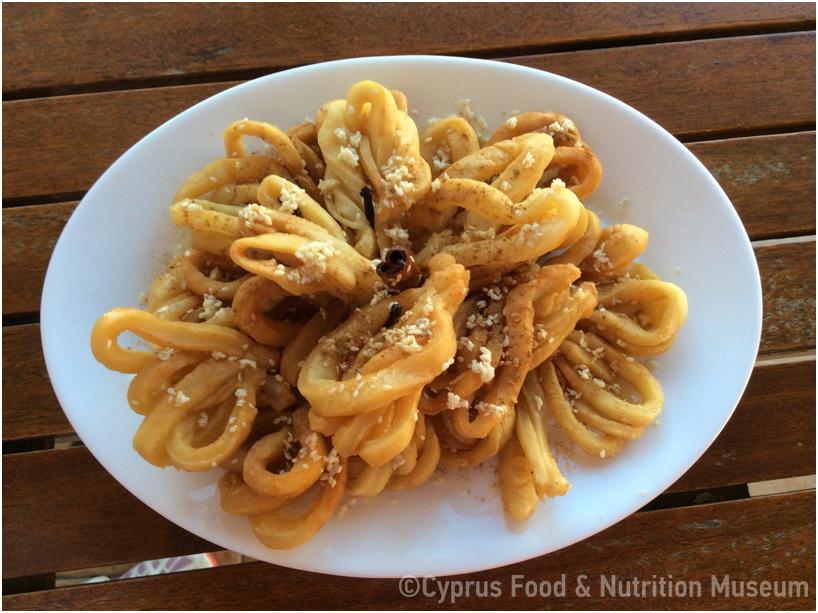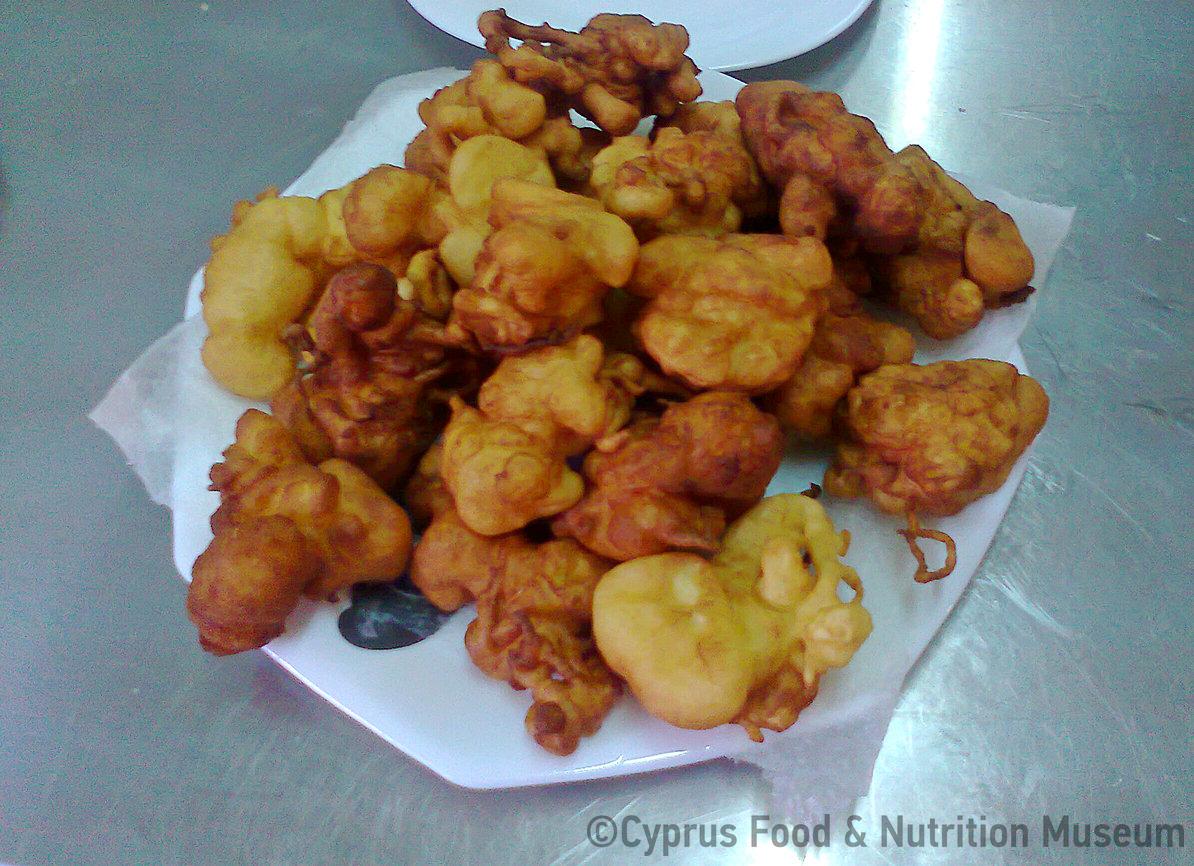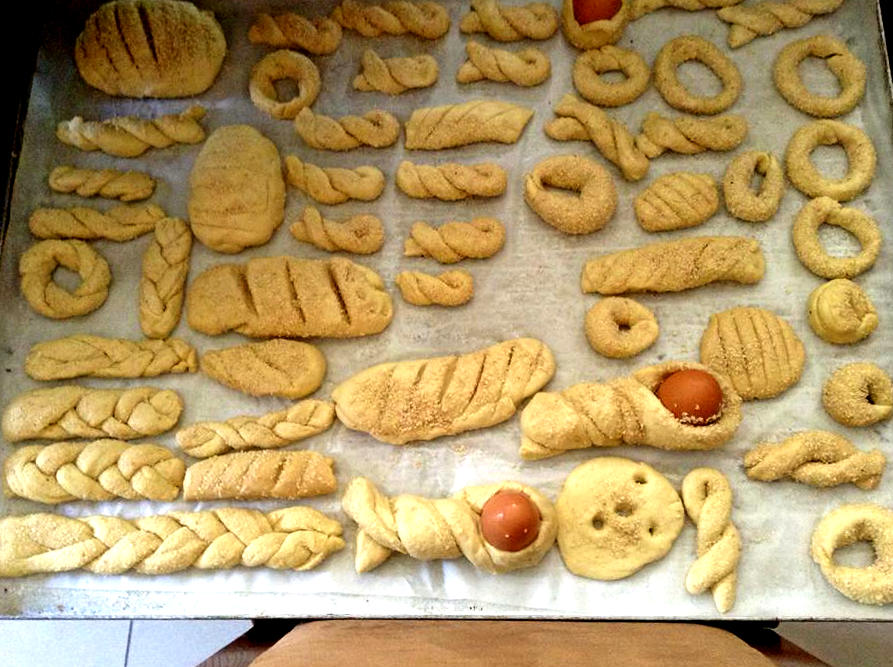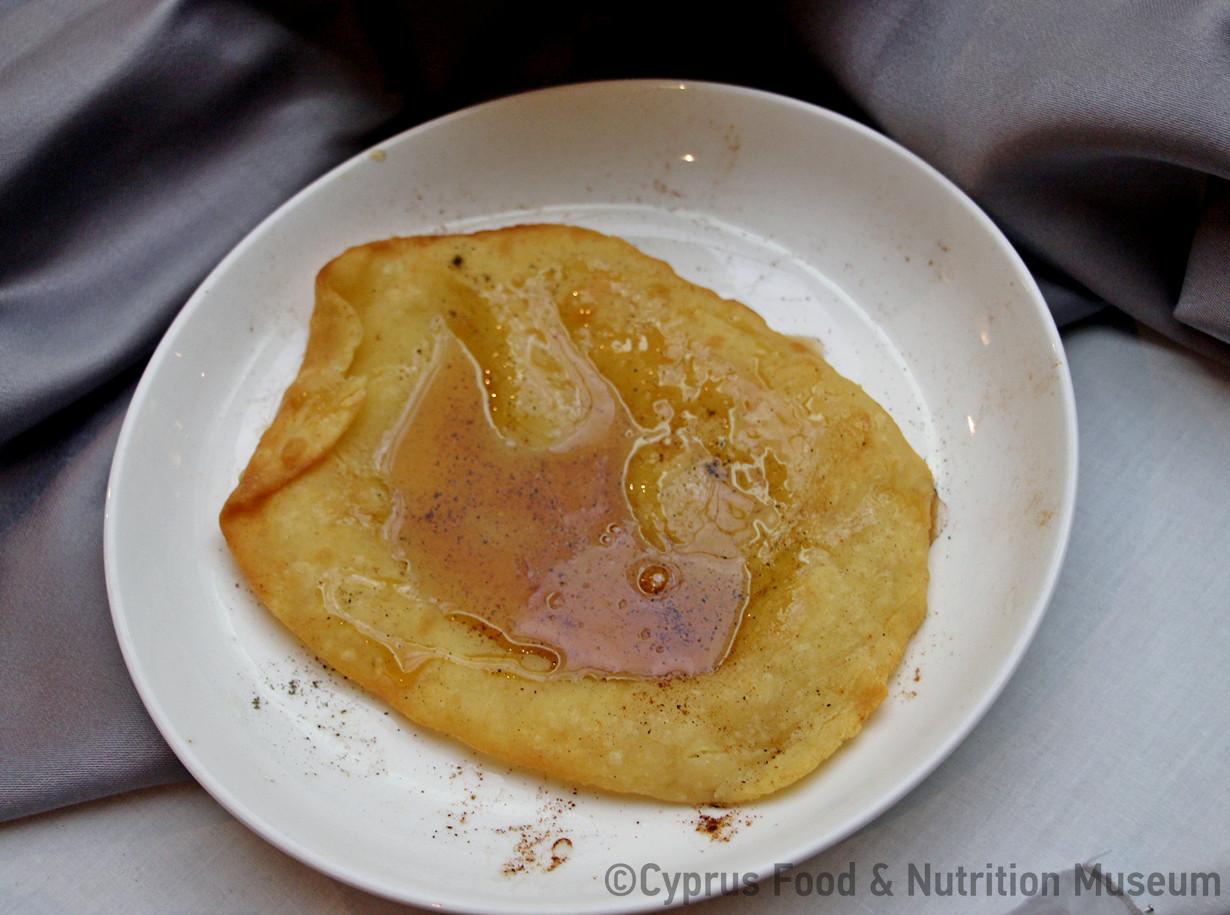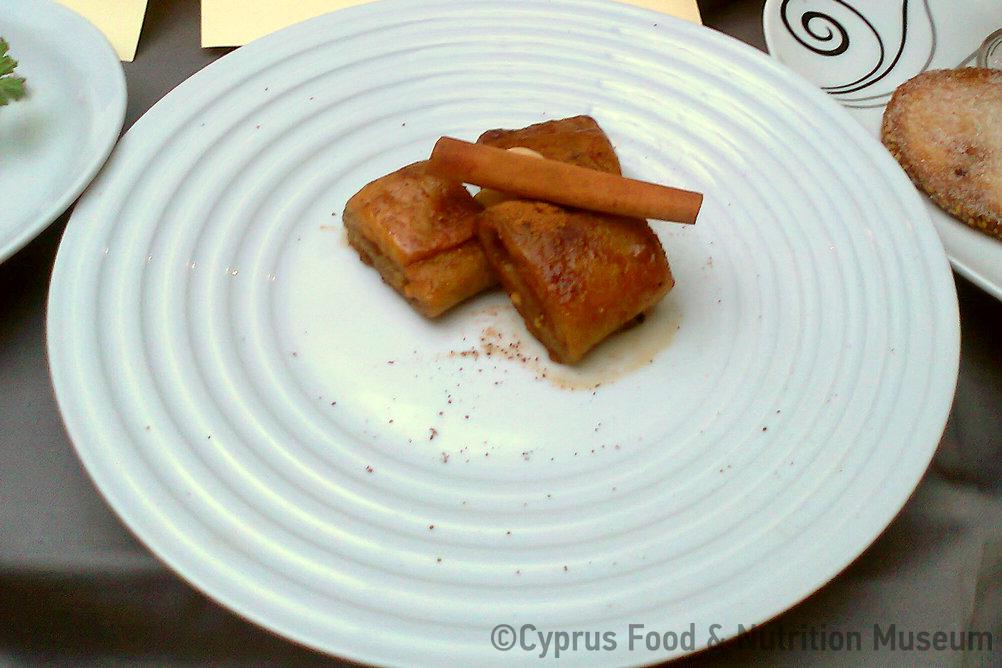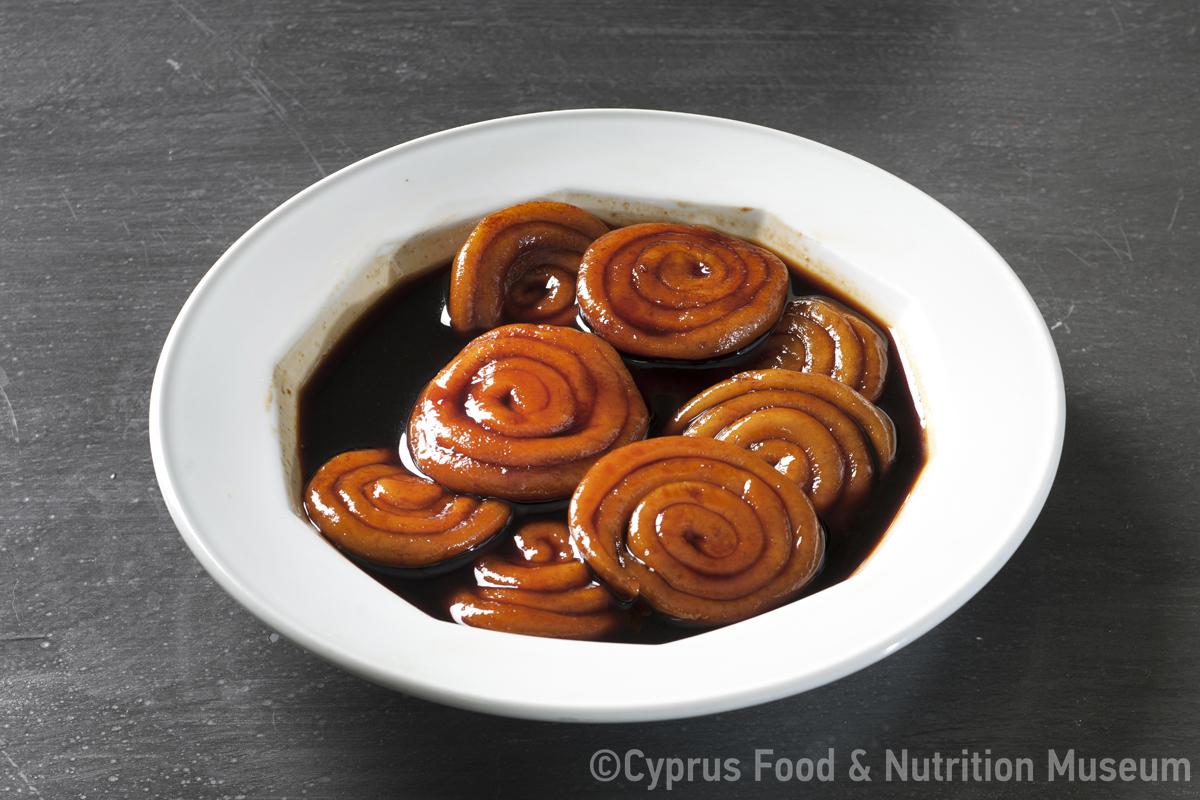A type of sweet pasta.
Name - Origin
Koullourouthkia was a special type of dough, which was first boiled in water and then either in honey or carob syrup or grape syrup (epsiman), according to the place of production (Kypri - Protopapa 2003, 267).
ETYM. < later kollourion < ancient kollyrion (Babiniotis 2005, entry κουλλούρι (the), 943) < ancient kollyra (Kypri 1979 [2002²], entry κουλλούριν,το, 242; Petrou-Poeitou 2013, entry Κουλούρι, 67).
Koullourouthkia were shaped in various ways and so their name was given to the shape of the dough. They were called koullourouthkia when they were shaped like small koullouri; in Karpasia they were called tertz̆ellouthkia as they were shaped like tertz̆éllia, i.e. door knobs. In Rizokarpaso, they were shaped like flowers and were, therefore, called loullouthkia (which means flowers in Cypriot) (Kypri - Protopapa 2003, 267).
In the area of Kythrea, koullourouthkia were bread crumbs fried in olive oil, which would be added in soups (Petrou-Poeitou 2013, entry Κουλουρούθκια, 67).
They were made with simple dough (flour and water) in the shape of small 2cm diameter. They were immersed for a minute in hot water and then they would be cooked in epsima (grape syrup) or haroupomelo (carob syrup) or honey. (Kypri 1983 [2003²], entry κουλλουρούδκια,τα, 312). Chrysanthos S. Kyprianou informs us about the preparation process: "We knead the flour (usually local wheat flour) without adding sourdough starter or salt. We shape small koullourakia on the board, which are about as thick as our little finger and no more than ten cm in diameter; we make two circles. Drop them in hot water and boil them well. Let them rest for a while, then put them in another panwith epsima and cook them until epsima starts to boil. Some housewives don't boil them in water, instead, they cook them directly with epsima, but they tend to be a bit hard." He describes them as difficult to digest, as all pasta is, and points out that in the plains it is customary to use carob syrup while epsima was customary in the wine villages (Kyprianou 1974, 298).
Functional and symbolic role
They used to make koullourouthkia often, especially during the fasting periods (Kyprianou 1974, 298).
Koullourouthkia were intertwined with fasting. They were especially made on days when they would not consume oil, e.g. on the days of: St. John (29 August), the Cross (14 September), Green Monday or during the Holy Week (Kypri - Protopapa 2003, 267; Samaras 1992, 83-86).
They also used to make them on the feast of Ayia Varvara on the 4th of December, a day that lies within the fasting period. In fact, when they were made on that day they were called 'varvarouthkia' (Kyprianou 1974, 298).
Additional information and bibliography
In Rizokarpaso, loullouthkia were pieces of dough that were folded and pressed in the middle to give the shape of a violet. They would wash carobs, dry them, pound them and soak them in hot water overnight. In the following morning, they would put them in a basket, place it in a pot and pour hot water over them again to remove their sweetness. Then they would strain the juice and boil it and place the loullouthkia in it. In Vathylaka, they used the same method to make tertz̆elluthkia, except that they would ground the carobs in the mill, instead of pounding them. In Marathovouno, they would cook the tertz̆elluthkia in bee honey. In Kapouti, they would boil the koullourouthkia in carob syrup or they would liquify pastellin and cook them in the syrup (Kypri - Protopapa 2003, 267-268).
Kypri Th. D. (ed.) (1983 [2003²]), Υλικά διά την σύνταξιν ιστορικού λεξικού της κυπριακής διαλέκτου, Μέρος Β΄, Γλωσσάριον Ξενοφώντος Π. Φαρμακίδου, Publications of the Centre for Scientific Research, IX, Nicosia.
Kypri T. - Protopapa K. A. (2003), Παραδοσιακά ζυμώματα της Κύπρου. Η χρήση και η σημασία τους στην εθιμική ζωή, Publications of the Centre for Scientific Research, XVIII, Nicosia. Petrou-Poeitou E. (2013), Από πού κρατάει η σκούφια τους. Λέξεις και ιστορίες από τον κόσμο της γεύσης, Epiphaniou Publications, Nicosia.
Kyprianou Ch. S. (1974), «Τροφαί του χωριού Τσακκίστρα της Κύπρου», Λαογραφία ΚΘ΄ (ΧΧΙΧ), Athens, 295-310.
Petrou-Poeitou E. (2013), Από πού κρατάει η σκούφια τους. Λέξεις και ιστορίες από τον κόσμο της γεύσης, Epiphaniou Publications, Nicosia.
Samaras P. M. (1992), «Παραδοσιακές τροφές από ζυμάρι», Λαογραφική Κύπρος 22,42, 83-86.
Stalo Lazarou, Varvara Yangou, Demetra Demetriou, Argyro Xenophontos, Tonia Ioakim
